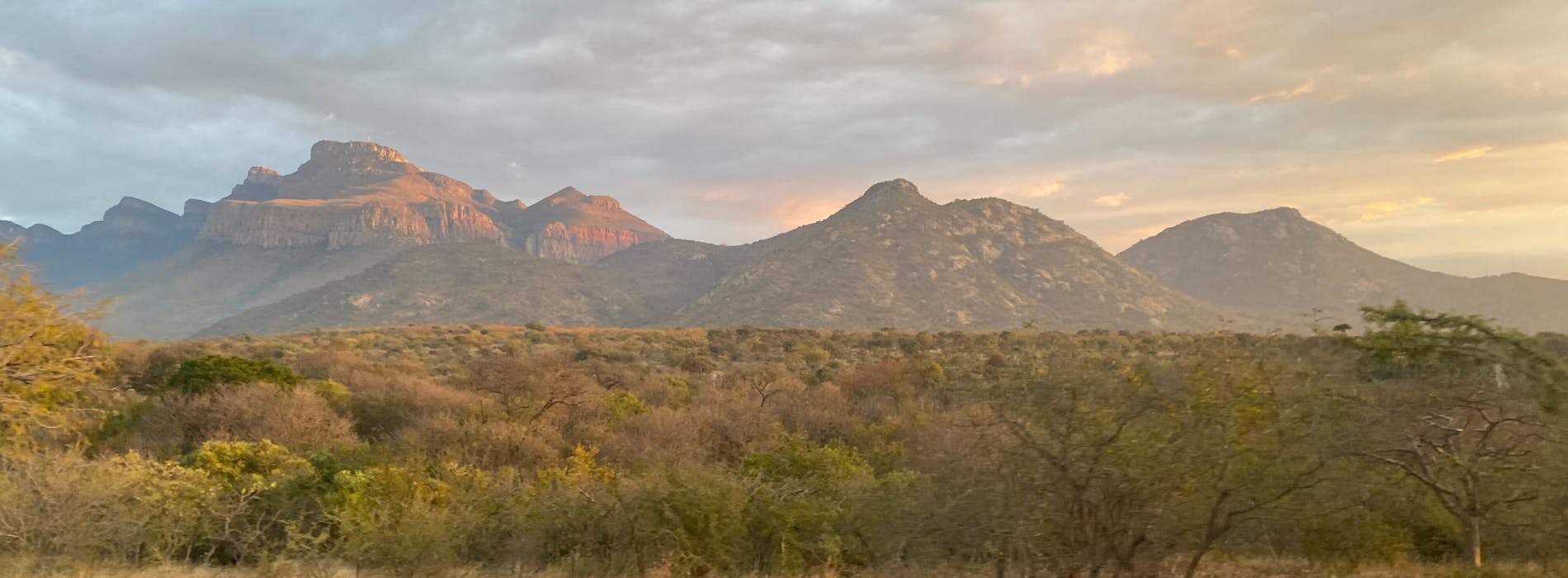
I spent two weeks at Phinda Game Reserve on the eastern side of South Africa, about a 90-minute drive north of Richards Bay where I flew to via Johannesburg. I really loved my time there. I shared a house within the reserve with the other volunteers – the first week two (English) girls, then one left and a couple from the Netherlands joined us for the second week. I had my own bedroom and we shared a bathroom – we all got on very well and the communal living and cooking together was good fun.
Our days were organised by a permanent employee on the reserve who was a mix of ranger and researcher. We generally set out in the vehicle at 6.30am each morning, getting back any time between 10 and 12 depending on what was going on, then going out again about 3pm and getting back between 6 and 8 (though one night it was 10.30!).
We spent our time doing transects in different parts of the reserve recording all the mammals we saw, tracking particular animals if they needed to be checked up on for some reason using telemetry trackers (i.e. waving an aerial around hoping to hear a beep!), or driving around different areas of the reserve just checking what was about/going on and recording all the lions, rhinos, elephants and buffalo we saw.
Fortunately, the guide also liked birds so she was happy to stop for them too if there was something interesting around. We saw masses – the reserve has an important rhino programme so there were lots of white rhino and some black rhino too. Unfortunately, their cheetahs aren’t doing so well but we did see two pairs of brothers at different times. We also saw lions – one set of lionesses had 5 cubs between then, 3 only about two months old so very cute – and one leopard on a night drive.
We had some very exciting close encounters with animals too. We helped track a particular black rhino, checking on its location the previous two days and then on the third day a helicopter was brought in and the vet darted it so that new ear and leg trackers could be fitted. We were able to watch everything standing right next to the rhino along with some guests from the lodges on the reserve who had paid a lot of money for the privilege – that’s how they help fund the work.
Another day we watched the vet doing an operation on the leg of a cheetah. The cheetah had been darted and transferred into an enclosure a couple of days before so it was easy for him to be darted again and brought out to the vet’s travelling surgery – so it all happened in the open next to the enclosure. Again we were able to watch everything and we helped carry the cheetah back into the enclosure when it was all over – and before he woke up again!
The reserve has just started a pangolin reintroduction programme – you may remember I was very excited to see one in Botswana last year on a night drive – the first one I’ve ever seen. They have released two and after several days we tracked to find which burrows they were in so they could be weighed in the evening when they came out (to make sure they’re remaining healthy) – our very late night was waiting for one to emerge but she wouldn’t play ball and we gave up! They also have a 10-month-old male pangolin who was rescued from some traffickers (sadly pangolins are the most illegally trafficked mammal in the world) and is being looked after on the reserve with a view to releasing him when he’s old and strong enough. Meanwhile, he is taken out every afternoon for a walk to enable him to learn to locate and dig out termite mounds as termites and ants are what they exclusively eat. The lady looking after him had a couple of days off so we got to take him out one of the days which was brilliant – he was such a character!
So overall a great time in Phinda – saw 24 different types of mammal and identified 86 species of bird – though, as always, saw a lot more.







